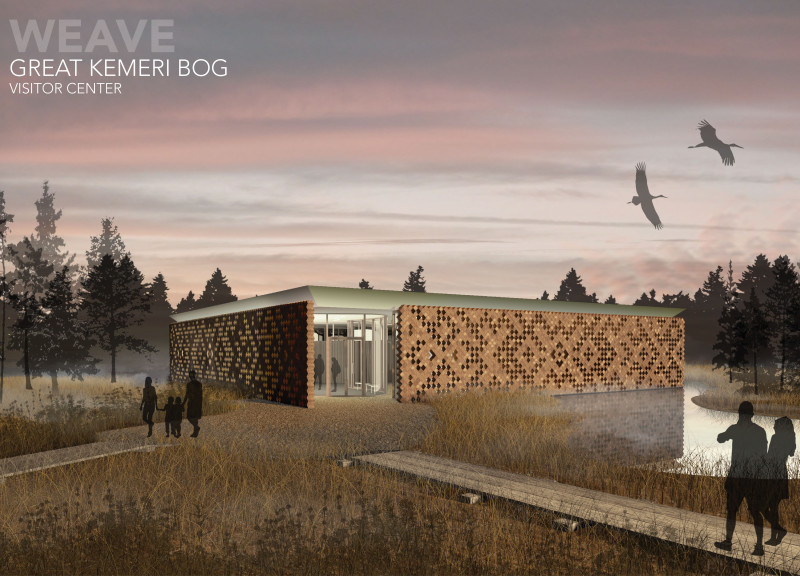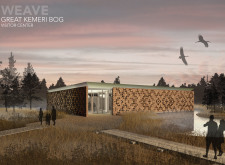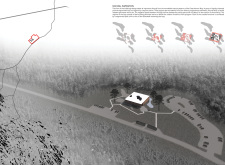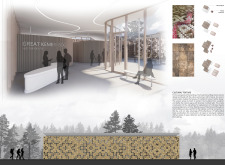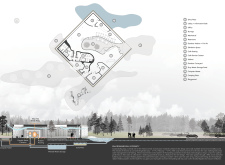5 key facts about this project
The Great Kemeri Bog Visitor Center is located in the unique landscape of Latvia's Great Kemeri Bog. It serves as a space for learning and gathering, designed to connect with its natural surroundings. The overall concept reflects the shapes found in the bog’s clustered pools, creating a structure that is both practical and responsive to the landscape. The layout encourages interaction between the inside and outside, offering visitors an engaging experience.
Natural Patterns
The design incorporates a square outline that divides into four regions, each corresponding to a different function. This layout helps create a clear flow within the Visitor Center and allows for easy movement that simulates walking through the bog itself. It enhances accessibility and makes the space welcoming to all who visit.
Cultural Integration
A key feature of the Visitor Center is its connection to Latvian culture. An exterior wood screen is used to reflect traditional textile designs while providing protection against vandalism. This screen also allows light to filter into the building, creating varying atmospheres throughout the day and enriching the visitor experience.
Sustainability Features
Sustainability is integral to the design, with locally sourced materials chosen to minimize environmental impact. Rainwater management is built into the design, including a retaining pond that collects water while serving as a landscape feature. This filtered water is reused within the building. Additionally, a compost heating system utilizes forest waste, combined with a solar hot water array, to improve energy efficiency and reduce carbon footprint.
An open-air courtyard enhances the connection between the building and the natural environment. It provides a quiet space for visitors to reflect while emphasizing the importance of the surrounding bog.


